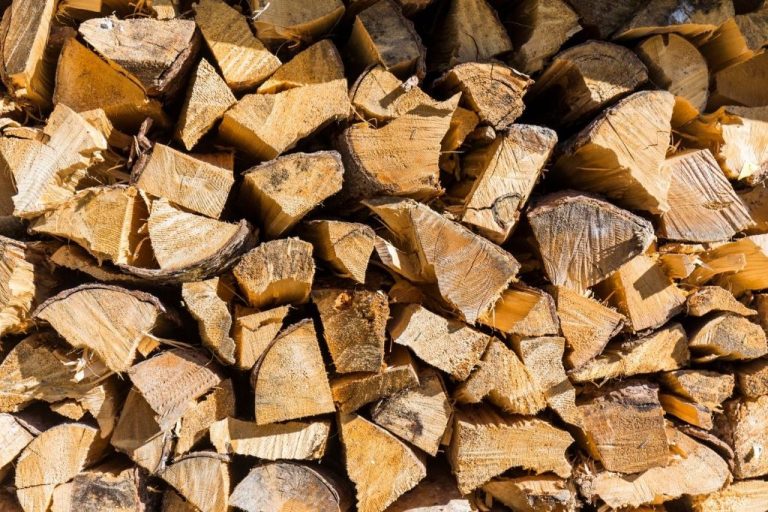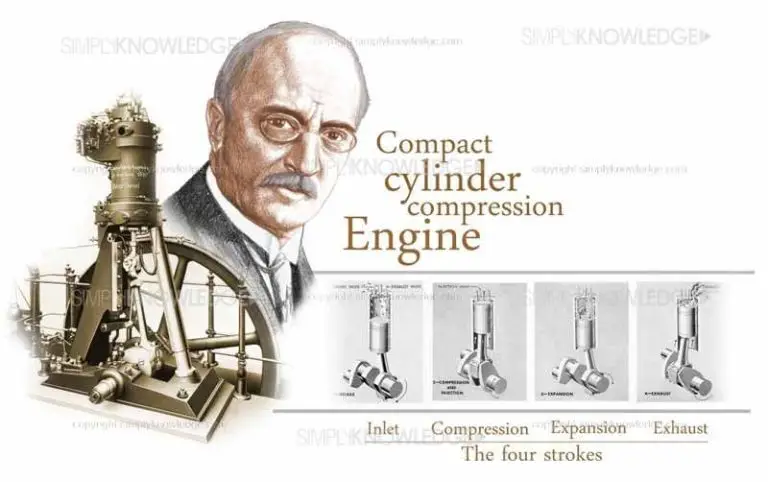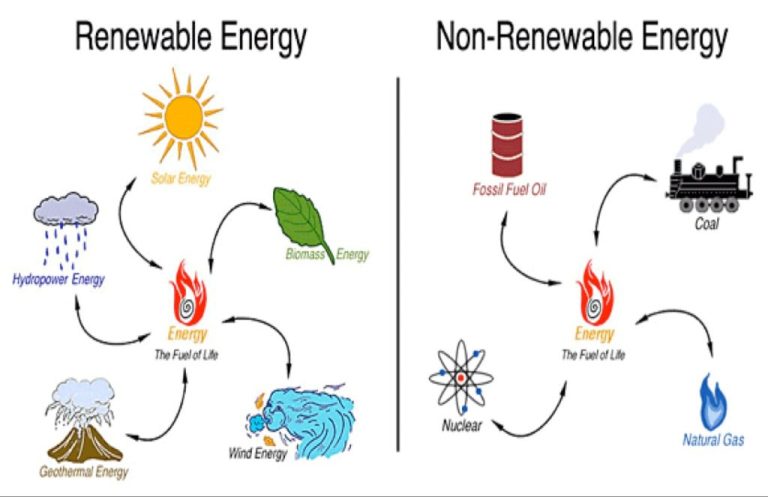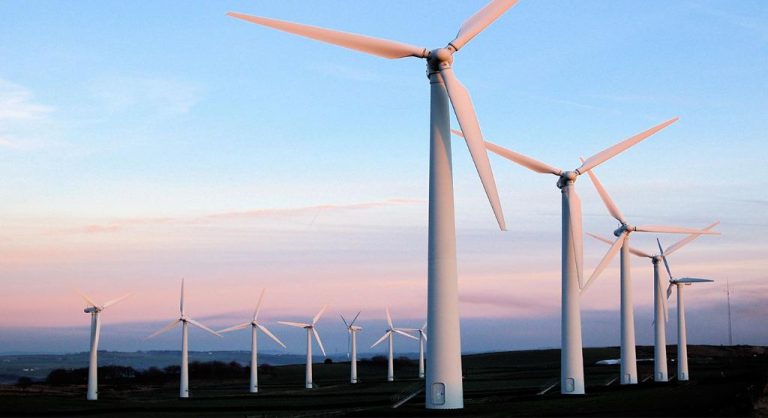What Energy Is Biomass Energy?
What is biomass?
Biomass is organic material that comes from plants and animals. It is a renewable energy source based on the carbon cycle, unlike fossil fuels such as coal, oil and natural gas that take millions of years to form.
Biomass contains stored energy from the sun. Plants absorb sunlight during photosynthesis to grow and form biomass. The main biomass materials used for energy include:
- Wood and wood processing wastes – sawdust, timber slash, wood chips, bark
- Agricultural crops and waste – corn, soybeans, sugar cane, switchgrass, wheat, algae
- Food, yard, and wood waste – municipal solid waste, landfill gas, methane
- Animal manure and human sewage
These biomass feedstocks can be directly burned for heat or converted into biomass fuels like wood pellets, biogas, and biofuels for renewable power generation, transportation, and heating applications.
Types of Biomass
There are several different types of biomass that can be used for energy production:
Wood – This includes wood chips, pellets, and waste wood from manufacturing operations like sawmills. Wood is a major source of energy from biomass.
Agricultural waste – Crop residues like corn stalks and husks, sugarcane waste, and other plant materials left over from agriculture operations are an abundant biomass source.
Municipal solid waste – Garbage, food scraps, plastics, paper, and other waste from homes and businesses can be converted into energy at waste-to-energy plants.
Landfill gas – The breakdown of municipal solid waste in landfills produces methane gas that can be captured and used for energy.
Biogas – Organic waste from sewage plants, animal manure, and food processing can be anaerobically digested to produce biogas, which is mostly methane.
How biomass energy works
Biomass energy starts with photosynthesis. During photosynthesis, plants absorb energy from the sun to convert carbon dioxide and water into carbohydrates like sugars and starches. The chemical energy from the sun gets stored in the chemical bonds of these carbohydrates. Biomass contains this stored chemical energy from the sun. When biomass is burned, the chemical energy is released as heat that can be used to generate electricity or provide heating.
The process works like this:
- Plants absorb sunlight through photosynthesis and convert it into chemical energy, storing it in the form of carbohydrates.
- Biomass is harvested and collected, containing the stored chemical energy.
- The biomass is burned, breaking down the carbohydrates and releasing the chemical energy as heat.
- The heat is used to boil water, creating steam to spin a turbine that generates electricity.
- Alternatively, the heat can directly provide heating for buildings, industrial processes, etc.
In summary, biomass energy utilizes the natural process of photosynthesis to convert and store solar energy. When the stored energy is released through combustion, it can provide renewable power generation and heating.
Benefits of biomass
One of the main benefits of biomass energy is that it is a renewable resource. Unlike fossil fuels such as oil, coal and natural gas, biomass can be replenished relatively quickly. Plants and trees that are used for biomass energy can be replanted and regrown, creating a sustainable supply of biomass over time. This makes biomass a reliable and consistent energy source.
Using biomass energy also helps divert waste from landfills. Things like yard trimmings, agricultural residues, wood waste from lumber mills and construction debris can be repurposed for biomass energy instead of taking up space in a landfill. This reduces the amount of organic matter sitting in landfills and rotting.
Since biomass can replace fossil fuels for energy generation, it can help reduce dependence on coal, oil and natural gas. More use of biomass energy means fewer fossil fuels being extracted and consumed. This has environmental benefits, as the burning of fossil fuels is a major contributor to air pollution and global climate change.
There are also economic benefits from biomass energy. The production of biomass and operation of biomass power plants creates jobs, often in rural areas. Growers, harvesters, plant operators and other workers are employed in the biomass supply chain. This provides economic opportunities in local communities.
Challenges of Biomass
While biomass offers many benefits, it also comes with some challenges that need to be addressed. Three key challenges with biomass energy are:
Expensive
Biomass can be more expensive than other renewable energy sources like wind and solar. Harvesting, processing, and transporting biomass fuel sources adds to the cost of producing usable energy. The infrastructure needed such as boilers, furnaces, and power plants also requires major capital costs upfront. This makes the return on investment longer compared to other renewable options.
Low Energy Density
Compared to fossil fuels, biomass has a relatively low energy density per unit weight. This means more storage space is needed for biomass fuel than traditional fuels. It also leads to higher transportation costs to move bulky biomass material. The low density leads to lower overall efficiency in energy production.
Air Pollution
Burning biomass emits air pollutants like nitrogen oxides (NOx), sulfur oxides (SOx), particulate matter, carbon monoxide (CO), and other hydrocarbons. These can contribute to smog, acid rain, and respiratory issues. Proper systems need to be in place to capture and filter out emissions. There are also concerns over sustainability practices, like ensuring replanting of biomass sources.
Biomass conversion processes
There are several ways to convert biomass into useful energy forms like heat, electricity, and transportation fuels. The main conversion processes are:
Combustion
Combustion is the most common and well-known biomass conversion process. It involves burning biomass directly to produce heat and generate steam that can spin turbines to create electricity. Any type of dry biomass can be burned directly including wood chips, pellets, agricultural residues, and municipal solid waste.
Gasification
Gasification converts biomass into a combustible gas called syngas. It involves heating biomass at high temperatures with some oxygen, but not enough for full combustion. The syngas can be burned directly for heat or power generation, or even further processed into fuels like hydrogen and methanol.
Pyrolysis
Pyrolysis uses heat without oxygen to break down biomass into liquid oils and biochar. The liquid bio-oil can be refined into transportation fuels. And biochar can be used as a soil amendment or for heating applications. Slow pyrolysis maximizes biochar output, while fast pyrolysis yields more bio-oil.
Anaerobic digestion
Anaerobic digestion uses microorganisms to break down biomass in an oxygen-free environment. This produces biogas containing methane and carbon dioxide. The methane-rich biogas can be used similarly to natural gas for heat, power generation, and potentially transportation.
Using Biomass for Electricity
Biomass can be used to generate electricity through various processes and technologies. Some of the main ways to produce electricity from biomass include:
Steam Turbines
Steam turbines are commonly used with biomass boilers to generate electricity. With this method, biomass fuel is burned in a boiler to heat water and produce high-pressure steam. The steam then spins a turbine that is connected to a generator to produce electricity. This is a mature and widely used technology that can provide steady baseload power from biomass.
Gas Turbines
Gasification converts biomass into a combustible gas which can then be used to power gas turbines for electricity generation. The gasified biomass is burned in the gas turbine, which spins a generator. Gas turbines require the biomass to be processed into gas through gasification first. They can provide high efficiency electricity from biomass.
Combined Heat and Power (CHP)
CHP or cogeneration systems produce both heat and electricity from biomass in one integrated system. The biomass is burned to produce steam, which spins a turbine for power generation. The remaining heat from the steam is then captured and used for other heating applications like district heating. CHP allows maximizing the energy utilization from biomass.
These approaches allow generating renewable electricity from biomass feedstocks like wood, agricultural residues, and organic waste. When integrated with the grid, they provide carbon-neutral power generation at utility scales.
Using biomass for transportation
One of the major uses of biomass is as a transportation fuel. There are several types of biofuels that are derived from biomass feedstocks and used to power vehicles:
Biodiesel
Biodiesel is a diesel fuel substitute made from vegetable oils, animal fats, or recycled cooking greases. It is produced through a chemical process called transesterification whereby the oils are combined with alcohol in the presence of a catalyst to form methyl esters. Biodiesel can be used pure or blended with conventional diesel in different proportions. Using biodiesel reduces emissions of carbon monoxide, particulates, and hydrocarbons compared to regular diesel.
Ethanol
Ethanol is an alcohol fuel made by fermenting the sugars and starches found in biomass feedstocks like corn, sugarcane, or cellulosic plant materials. It is primarily used as a gasoline additive to increase octane levels and improve vehicle emissions. Ethanol blends up to 10% can be used in most modern gasoline-powered vehicles. Higher ethanol blends like E85 require flex-fuel vehicles designed for their use.
Renewable diesel
Renewable diesel is produced through hydrotreating, where hydrogen is used to process oils from biomass sources like vegetable oils, animal fats, and waste greases. The result is a diesel fuel that is chemically similar to petroleum diesel but has lower particulate and NOx emissions. Renewable diesel can be used directly in diesel engines without needing engine modifications.
Using biofuels can decrease reliance on fossil fuels and reduce greenhouse gas emissions from the transportation sector. However, large-scale production requires substantial amounts of biomass feedstocks.
Using biomass for heating
Biomass can be converted into various forms to provide clean heating for homes and buildings. Three of the main types used for heating are wood pellets, biogas, and biooil.
Wood Pellets
Wood pellets are made by compressing dried wood particles like sawdust into a small pellet. They are a popular form of biomass for heating due to their high energy density, low moisture content, and standardized properties. Modern pellet stoves and boilers can automatically feed the pellets and provide warmth through hot water or forced air systems.
Biogas
Biogas produced from anaerobic digestion of organic wastes like manure or food scraps contains methane that can be burned for heating. The biogas can be used in boilers, combined heat and power systems, or upgraded and injected into natural gas pipelines. Utilizing biogas helps prevent methane emissions while displacing fossil fuel use.
Biooil
Biooil is a liquid fuel processed from biomass through fast pyrolysis. It has an energy density similar to heating oil and can be used in modified boilers and furnaces. Biooil is advantageous because it can be easily transported and stored, and has lower emissions than heating oil. Further treatment can improve biooil quality for optimal performance in engines and turbines.
With various equipment and distribution options, biomass heating can provide climate-friendly warmth for many applications. Ongoing development aims to enhance efficiency and convenience while reducing costs.
Future of Biomass
Biomass energy has the potential to play an even greater role in the future as technology continues to advance. Some key areas of innovation and growth include:
Advanced Biofuels
Research is ongoing into advanced biofuels that can provide even greater benefits than conventional biofuels like ethanol and biodiesel. These advanced biofuels are being designed to be compatible with existing infrastructure and vehicles. They can help further reduce greenhouse gas emissions and diversify energy sources.
Biorefineries
Biorefineries are analogous to petroleum refineries, but use biomass as a feedstock instead of crude oil. They produce multiple products, including fuels, chemicals, heat and power. Integrated biorefineries maximize economic viability and efficient use of biomass resources.
Carbon Capture
Combining biomass energy production with carbon capture and storage technologies can actually result in negative carbon emissions – removing carbon dioxide from the atmosphere. This provides a mechanism for mitigating greenhouse gas emissions from other sectors of the economy.
With continuing technology advances and sustainable practices, biomass can play an increasingly important role in building a clean, renewable global energy system.







